Rank Species | ||
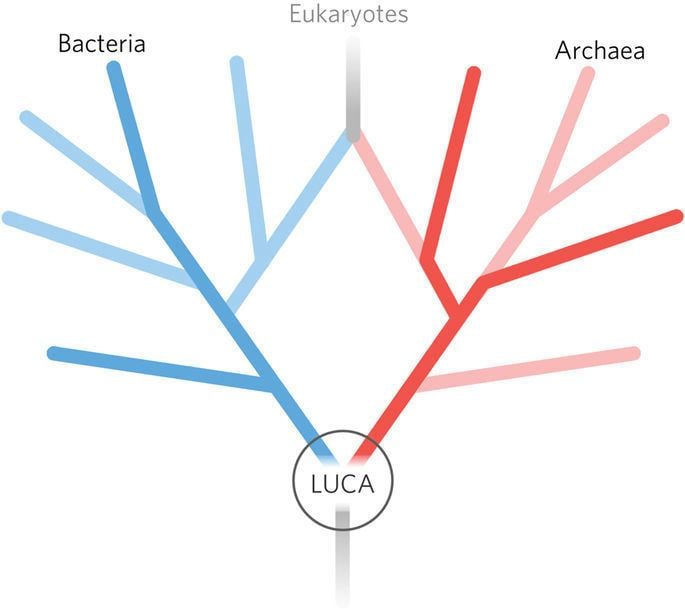 | ||
Similar Archaeans, Eukaryote, Euryarchaeota, Crenarchaeota, Thermotogae | ||
Last universal common ancestor no music
The last universal common ancestor (LUCA), also called the last universal ancestor (LUA), cenancestor, or (incorrectly) progenote, is the most recent population of organisms from which all organisms now living on Earth have a common descent. LUCA is the most recent common ancestor of all current life on Earth. LUCA should not be assumed to be the first living organism on Earth. The LUCA is estimated to have lived some 3.5 to 3.8 billion years ago (sometime in the Paleoarchean era). The composition of the LUCA is not directly accessible as a fossil, but can be studied by comparing the genomes of its descendents, organisms living today. By this means, a 2016 study identified a set of 355 genes inferred to have been present in the LUCA.
Contents
- Last universal common ancestor no music
- The last universal common ancestor simple or complex
- Features
- Hypotheses
- Location of the root
- References
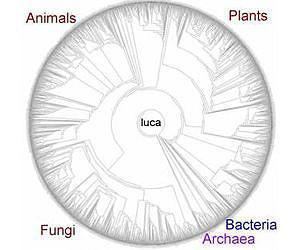
The earliest Evidence for life on Earth is biogenic graphite found in 3.7 billion-year-old metamorphized sedimentary rocks discovered in Western Greenland and microbial mat fossils found in 3.48 billion-year-old sandstone discovered in Western Australia. A 2015 study found potentially biogenic carbon from 4.1 billion years ago in ancient rocks in Western Australia, but such findings would indicate the existence of different conditions on Earth during that period than are generally assumed today, and point to an earlier Origin of life. In 2017 there was published a description of putative fossilized microorganisms that are at least 3.77 billion and possibly 4.28 billion years old in ferruginous sedimentary rocks in Quebec, Canada.
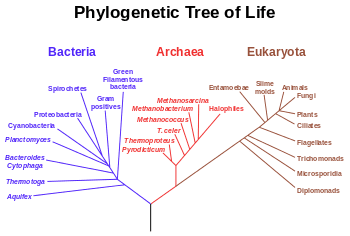
Charles Darwin proposed the theory of universal Common descent through an evolutionary process in his book On the Origin of Species in 1859, saying, "Therefore I should infer from analogy that probably all the organic beings which have ever lived on this earth have descended from some one primordial form, into which life was first breathed."
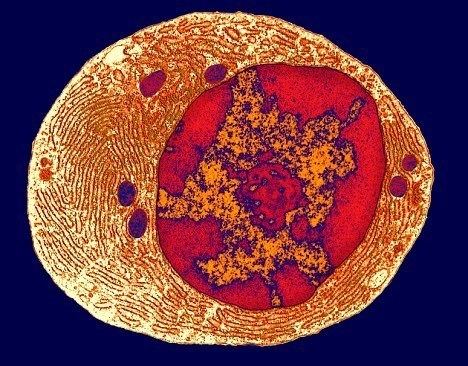
The last universal common ancestor simple or complex
Features
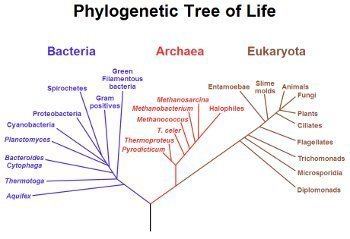
By analysis of the presumed LUCA's offspring groups, the LUCA appears to have been a small, single-celled organism. It likely had a ring-shaped coil of DNA floating freely within the cell, like modern Bacteria. Morphologically, it would likely not have been exceptionally distinctive among a collection of generalized, small-size, modern-day Bacteria. However, Carl Woese et al, who first proposed the currently-used three domain system based on an analysis of rRNA sequences of bacteria, Archaea, and eukaryotes, stated that the LUCA would have been a "...simpler, more rudimentary entity than the individual ancestors that spawned the three [domains] (and their descendants)" regarding its genetic machinery.
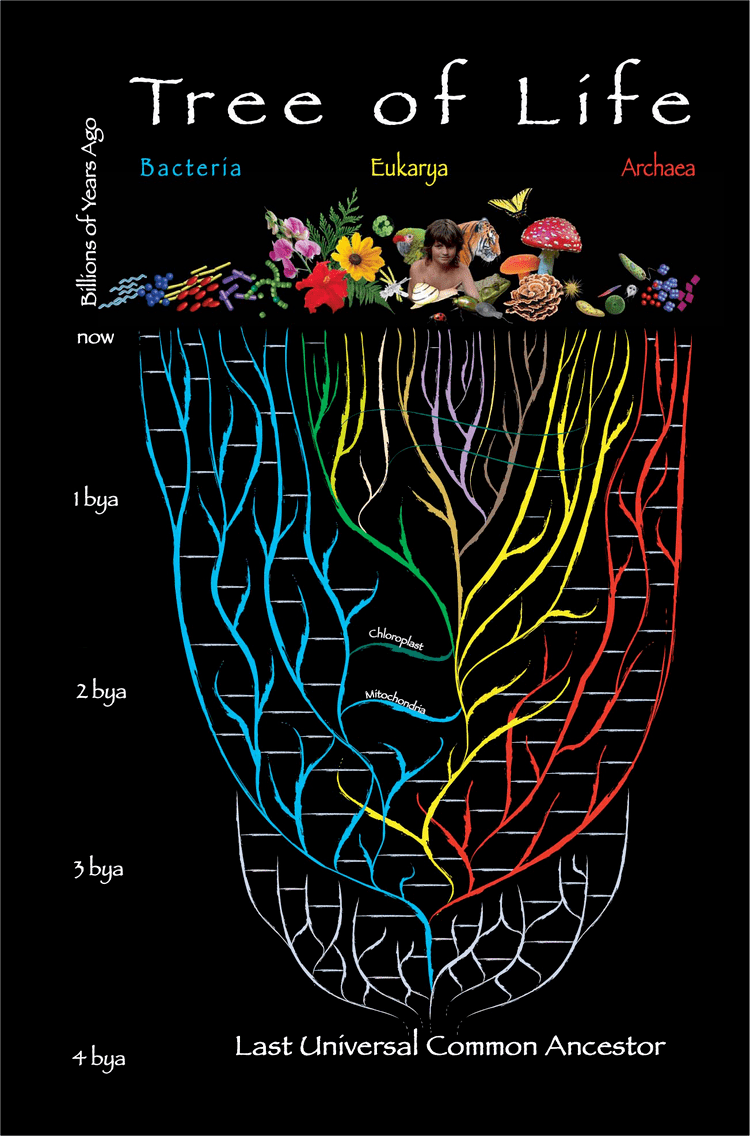
While the gross anatomy of the LUCA can only be reconstructed with much uncertainty, its internal mechanisms can be described in some detail, based on the properties currently shared by all independently living organisms on Earth.
The genetic code was most likely based on DNA. Some studies suggest that the LUCA may have lacked DNA and been defined wholly through RNA. If DNA was present, it was composed of four nucleotides (deoxyadenosine, deoxycytidine, deoxythymidine, and deoxyguanosine), to the exclusion of other possible deoxynucleotides. The DNA was kept double-stranded by a template-dependent enzyme, DNA polymerase. The integrity of the DNA was maintained by a group of maintenance enzymes, including DNA topoisomerase, DNA ligase and other DNA repair enzymes. The DNA was also protected by DNA-binding proteins such as histones. The genetic code was composed of three-nucleotide codons, thus producing 64 different codons. Since only 20 amino acids were used, multiple codons code for the same amino acids. If the code was DNA-based, it operated as follows. The genetic code was expressed via RNA intermediates, which were single-stranded. The RNA was produced by a DNA-dependent RNA polymerase using nucleotides similar to those of DNA, with the exception that the nucleotide thymidine in DNA was replaced by uridine in RNA.
The genetic code was expressed into proteins. These were assembled from free amino acids by translation of a messenger RNA by a mechanism composed of ribosomes, transfer RNAs, and a group of related proteins. The ribosomes were composed of two subunits, one big 50S and one small 30S. Each ribosomal subunit was composed of a core of ribosomal RNA surrounded by ribosomal proteins. Both types of RNA molecules (ribosomal and transfer RNAs) played an important role in the catalytic activity of the ribosomes. Only 20 amino acids were used, to the exclusion of countless other amino acids. Only the L-isomers of the amino acids were used. ATP was used as an energy intermediate. Several hundred enzymes made of protein catalyzed chemical reactions that extract energy from fats, sugars, and amino acids, and that synthesize fats, sugars, amino acids, and nucleic acid bases using arbitrary chemical pathways.
The cell contained a water-based cytoplasm that was surrounded and effectively enclosed by a lipid bilayer membrane. Inside the cell, the concentration of sodium was lower, and potassium was higher, than outside. This gradient was maintained by specific ion transporters (also referred to as ion pumps). The cell multiplied by duplicating all its contents followed by cellular division. The cell used chemiosmosis to produce energy. It also reduced CO2 and oxidized H2 (methanogenesis or acetogenesis) via acetyl-thioesters.
The cell probably lived in conditions found in deep sea vents caused by ocean water interacting with magma beneath the ocean floor.
Hypotheses
In 1859, Charles Darwin published On the Origin of Species in which he twice stated the hypothesis that there was only one progenitor for all life forms. In the summation he states, "Therefore I should infer from analogy that probably all the organic beings which have ever lived on this earth have descended from some one primordial form, into which life was first breathed." The very last sentence begins with a restatement of the hypothesis: "There is grandeur in this view of life, with its several powers, having been originally breathed into a few forms or into one..."
When the LUCA was hypothesized, cladograms based on genetic distance between living cells indicated that Archaea split early from the rest of life. This was inferred from the fact that the archaeans known at that time were highly resistant to environmental extremes such as high salinity, temperature or acidity, leading some scientists to suggest that the LUCA evolved in areas like the deep ocean vents, where such extremes prevail today. Archaea, however, were later discovered in less hostile environments, and are now believed to be more closely related to eukaryotes than bacteria, although many details are still unknown.
In 2010, based on "the vast array of molecular sequences now available from all domains of life," a formal test of universal common ancestry was published. The formal test favored the existence of a universal common ancestor over a wide class of alternative hypotheses that included horizontal gene transfer. While the formal test overwhelmingly favored the existence of a single LUCA, this does not imply that the LUCA was ever alone. Instead, it was one of several early microbes. However, given that many other nucleotides are possible besides those that are actually used in DNA and RNA today, it is almost certain that all organisms do have a single common ancestor. This is because it is extremely unlikely that organisms which descended from separate incidents where organic molecules initially came together to form cell-like structures would be able to complete a horizontal gene transfer without garbling each other's genes, converting them into noncoding segments. Further, many more amino acids are chemically possible than the twenty found in modern protein molecules. These lines of chemical evidence, taken into account for the formal statistical test by Theobald (2010), point to a single cell having been the LUCA in that, although other early microbes probably existed, only the LUCA's descendents survived beyond the Paleoarchean Era. With a common framework in the AT/GC rule and the standard twenty amino acids, horizontal gene transfer would have been feasible and could have been very common later on among the progeny of that single cell.
In 1998, Carl Woese proposed (1) that no individual organism can be considered a LUCA, and (2) that the genetic heritage of all modern organisms derived through horizontal gene transfer among an ancient community of organisms. While the results described by the later papers Theobald (2010) and Saey (2010) demonstrate the existence of a single LUCA, the argument in Woese (1998) can still be applied to Ur-organisms. At the beginnings of life, ancestry was not as linear as it is today because the genetic code took time to evolve. Before high fidelity replication, organisms could not be easily mapped on a phylogenetic tree. Not to be confused with the Ur-organism, however, the LUCA lived after the genetic code and at least some rudimentary early form of molecular proofreading had already evolved. It was not the very first cell, but rather, the one whose descendents survived beyond the very early stages of microbial evolution.
Location of the root
The most commonly accepted location of the root of the tree of life is between a monophyletic domain Bacteria and a clade formed by Archaea and Eukaryota of what is referred to as the "traditional tree of life" based on several molecular studies starting with C. Woese. A very small minority of studies have concluded differently, namely that the root is in the Domain Bacteria, either in the phylum Firmicutes or that the phylum Chloroflexi is basal to a clade with Archaea+Eukaryotes and the rest of Bacteria as proposed by Thomas Cavalier-Smith.
Research published in 2016, by William F. Martin, by genetically sequencing 6.1 million protein coding genes from sequenced prokaryotic genomes of various phylogenetic trees, identified 355 protein clusters from amongst 286,514 protein clusters that were probably common to the LUCA. The results "depict LUCA as anaerobic, CO2-fixing, H2-dependent with a Wood–Ljungdahl pathway, N2-fixing and thermophilic. LUCA's biochemistry was replete with FeS clusters and radical reaction mechanisms. Its cofactors reveal dependence upon transition metals, flavins, S-adenosyl methionine, coenzyme A, ferredoxin, molybdopterin, corrins and selenium. Its genetic code required nucleoside modifications and S-adenosylmethionine-dependent methylations." The results depict methanogenic clostria as a basal clade in the 355 lineages examined, and suggest that the LUCA inhabited an anaerobic hydrothermal vent setting in a geochemically active environment rich in H2, CO2, and iron.
